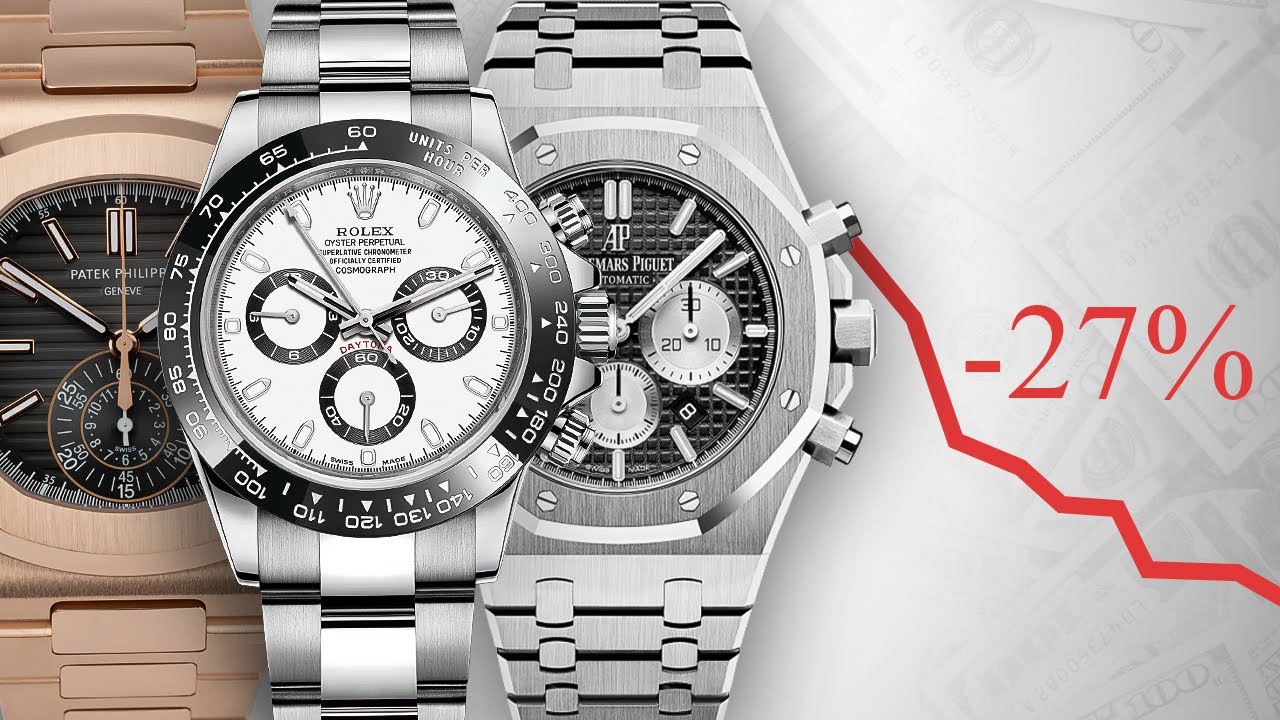Are there any emerging markets particularly receptive to luxury or Swiss watch sales?

Amid an uncertain macro environment and volatile markets, luxury goods remain resilient. In fact, our survey found that fashionable professional buyers (Gen Z and millennials) are increasingly engaging with the secondary market as a way of getting value for money.
Emerging countries like India, Russia, Vietnam and Ukraine are identified as promising new export markets. This is one of the reasons why Switzerland is pursuing Free Trade Agreements with these markets.
China
When most people think of luxury watches, Switzerland is the first nation to come to mind. And while growth in Swiss watch exports to China has slowed recently, the country remains an important market. According to a new study by Credit Suisse, the decline is due more to political measures in China than to an overall slowdown in affluence. The report notes that in the long run, China will remain a significant export market for Swiss watchmakers. The study also pinpoints Vietnam, India, Russia, Ukraine, Malaysia and Mexico as potential emerging markets for the industry. In particular, the growing affluence of consumers in these countries can compensate for the high import duties and taxes that have to be paid on Swiss watches.
Across the watch world, manufacturers are exploring urgent solutions to reignite sales. One solution has been a push to appeal to women. Omega’s HerTime exhibition and Zenith’s collaboration with 14-year old professional skateboarder Sky Brown are just two examples of this trend. Another approach is to target younger customers through the pre-owned market. Ten years ago, this segment barely made a dent in the industry, but it now represents a growing share of sales for many brands.
A further strategy is to focus on Asia. Richard Mille, for instance, allocates 40{6958c5d799b3d7f77fb2ccbbee981e2c6d9d604bc0fd326801ce45d8abc34aaa} of its production to this region. The brand has also increased its events for Asian clients, and it is making a concerted effort to expand online, where demand has been growing. Finally, a number of watchmakers have begun to limit production in order to boost resale values and thus make their watches more attractive as investments. These scarcity tactics are a big reason why prices for some top “trophy” models have dropped sharply in the post-pandemic period.
Japan
As the world’s third-largest economy, Japan is a major source of global capital and credit. But it is also a market that can be extremely fickle, especially for luxury watchmakers. A country that once enjoyed its own version of the Roaring 20’s, with a population accumulating wealth like never before and the most ostentatious displays of conspicuous consumption, suddenly collapsed in 1991 in a burst of price asset bubbles that ushered in “The Lost Decade.”
As a result, some luxury Swiss watches began to be perceived as “overpriced” in Japan, with buyers preferring to opt for Japanese brands instead. This has prompted some independent Swiss producers to focus their efforts on this demanding market. One such example is the avant-garde watchmaker Richard Mille, which opened its first Tokyo boutique five years ago and now counts it as its biggest regional market (with 40{6958c5d799b3d7f77fb2ccbbee981e2c6d9d604bc0fd326801ce45d8abc34aaa} of sales to Asia).
During a visit to Richard Mille’s Singapore office in December, chief executive Marc Amelio relayed how this shift in demand has helped his company grow into one of the world’s top ten largest watchmakers — even after the recent slowdown in Switzerland’s overall exports. Amelio attributed the growth in Asia to high-income people in countries such as China, India and Indonesia who are increasingly able to afford higher-end watches — which is why he says it’s important for Switzerland to continue working with these governments on concluding free trade agreements with them.
In terms of the future, Amelio cited Vietnam, Russia and Ukraine as markets that have the greatest potential to boost Switzerland’s global share of watch exports. However, he conceded that the industry’s consolidation in recent years, with many brands merging their distribution and sales networks, leaves a number of smaller watchmakers vulnerable to being swept away from business relationships by larger rivals.
India
The Swiss watch industry enjoys a world-renowned reputation as the home of household names like Rolex, Omega and Patek Philippe. But it also boasts expertise in all the various crafts that go into fine watchmaking. That’s why it is such a good fit for India, where demand for luxury watches is rising fast and the market is growing.
The country has a population of 1.1 billion people and a middle class that is larger than that of the United States or the European Union. With this sizeable customer base, it’s no surprise that the country is becoming a leading market for Swiss watch sales.
But the market’s rapid growth is creating challenges for small producers. For example, new rules for the “Swiss Made” label are requiring that more of a product’s production costs must be incurred in Switzerland. This, combined with the increasing strain on the export markets, is likely to speed up the concentration process in the sector.
Fortunately, for independent traditional brands, this is not a problem that can’t be addressed. Yasho Saboo, the founder of the Indian distributor KDDL, has been able to capitalise on India’s growing demand for luxury watches by focusing on the high end. His company, which was founded in 1983, is now one of the largest exporters of Swiss watch parts and has recently expanded into distribution.
Mid-year reports from major watch groups and luxury goods companies relay strong sales figures for all segments, including the entry-level segment in which Tata-owned Titan dominates with its brands like Hamilton, Sonata and Fastrack (read our interview with CEO Vijeh Rajan here). And the upper price range, where demand is expected to continue to grow, should be an attractive arena for independent brands such as Richard Mille. This manufacturer produces the fewest pieces of any Swiss luxury producer—a mere 5,300 a year—but its ultra-premium products still command top prices.
Russia
The Russian market is the 17th largest in the world and a major export market for Swiss watchmakers. Morgan Stanley estimates sales in the country totalled CHF260.1 million last year. Sales declined significantly in 2022, however, due to a combination of factors: the strong Swiss franc, a crackdown by China on luxury gift-giving, currency turbulence, political instability and uncertainty over the Covid-19 pandemic. In addition, the European Union imposed sanctions against Russia that restrict the export, reexport and transfer of items important to oil refining.
LVMH, which markets Louis Vuitton, Christian Dior, Guerlain, Givenchy, Kenzo and Celine, announced that it was suspending operations in Russia. In the case of Kering, which owns brands including Gucci and Saint Laurent, this meant closing directly operated boutiques. Other luxury brands have announced that they will close their boutiques only temporarily. This means that the Russian luxury retail market will resemble a ghost town for some time.
For small and medium sized watchmakers that have not built their own networks, this situation may pose an additional challenge. These brands typically rely on wholesalers and distributors to build up points of sale in the main cities. Nina Ricci, for example, relies on Bristol Trading House and is satisfied with their professionalism.
Some smaller producers have decided to continue operating in Russia, for instance the Swatch Group brands Tissot and Breguet. The former has been working in the country since 1858 and the latter has points of sale in Moscow and Saint Petersburg. They also use the services of a local PR agency and cooperate with major publications. Both use celebrity ambassadors such as Tiger Woods, Kimi Rakonen and Ines Sastre.
Ukraine
A longtime Soviet ally, Ukraine was a cornerstone of the Union, housing most of the nation’s industrial and military capacity. It was also where most of the Soviet Union’s nuclear stockpile was stored. As a result, it is no surprise that the current conflict over Ukraine has fueled bitter anti-Russian sentiment. This enmity has been exacerbated by competing interpretations of the past — which Putin in particular seems particularly invested in.
Despite the fact that the Russian government has sanctioned many Western companies and individuals, it’s still possible for wealthy Russians to buy luxury watches. According to Reuters, the country’s richest man, billionaire oligarch Viktor Yushchenko, owns a TAG Heuer Carrera Calibre HEUER 01 Chronograph, a Rolex Submariner, a Breguet and a Bovet Chateau de Motiers.
The conflict has forced a number of prominent luxury brands to drop Russia from their sales portfolio. As a result, many shops have closed and imports of new models have stopped, leading to a shortage of watch inventory in the market. This has created a black market, where new watches are available for a 30-50{6958c5d799b3d7f77fb2ccbbee981e2c6d9d604bc0fd326801ce45d8abc34aaa} premium over their retail prices.
While there is a risk that the current crisis could eventually impact sales in the long run, the repercussions are likely to be short-term, as investors weigh the costs and benefits of engaging with the country. Regardless of the long-term effects, it is important for luxury watch makers to monitor the situation and continue to communicate with their customers in Ukraine. Rationally, the loss of the Russian market would be a small cost to Swatch Group, LVMH and Richemont, whose sales in Russia account for less than 2{6958c5d799b3d7f77fb2ccbbee981e2c6d9d604bc0fd326801ce45d8abc34aaa} of their overall revenue.










